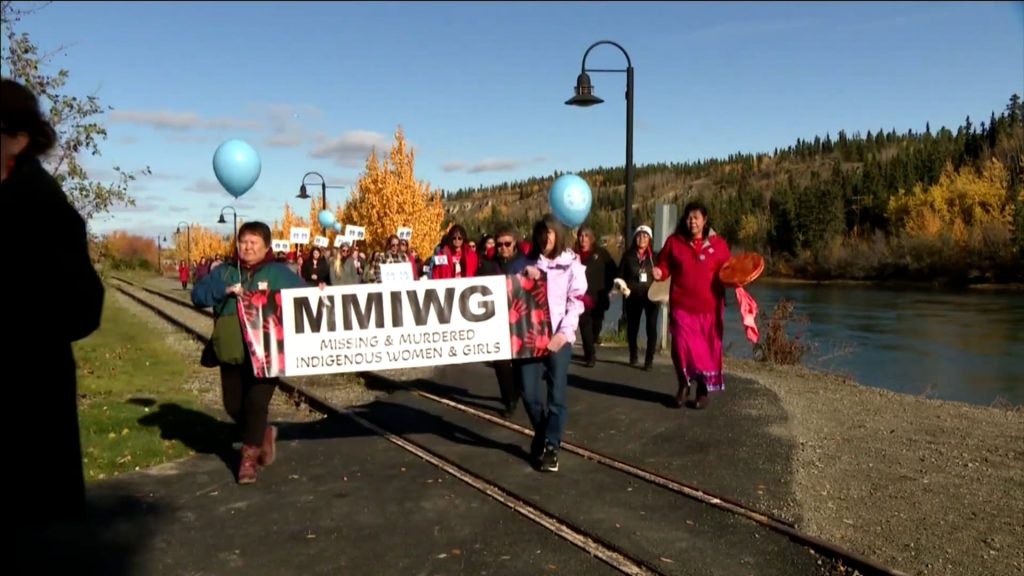Damning Statistics
"The majority [87 percent] of homicides involving Indigenous women and girls reported by police between 2009 and 2021 were cleared by police, in that an accused person was identified in relation to the case."
- Between 2009 and 2021, the rate of homicide against First Nations, Métis and Inuit women and girls was six times higher than the rate among their non-Indigenous counterparts. Homicides of Indigenous women and girls take complex pathways through the Canadian criminal courts, from police laying or recommending charges to court processes and outcomes.
- The majority (87%) of homicides involving Indigenous women and girls reported by police between 2009 and 2021 were cleared by police, in that an accused person was identified in relation to the case. This proportion was slightly lower than in homicides of non-Indigenous women and girls (90%).
- Most Indigenous women and girls were killed by someone that they knew (81%), including an intimate partner (35%), acquaintance (24%), or family member (22%). In most cases, the person accused of their homicide was also Indigenous (86%).
- Police were less likely to lay or recommend a charge of first-degree murder—the most serious type of homicide charge—when the victim was Indigenous (27%) compared to when she was not (54%). Instead, charges of second-degree murder (60%) and manslaughter (13%) were more common. Manslaughter charges were also more common when the accused person was Indigenous.
- When incidents of homicide of Indigenous women and girls moved to court, manslaughter charges were twice as common when the victims were Indigenous women and girls (41% of homicide charges) than when they were not (20%).
Statistics Canada Report
 |
490 Indigenous women and girls between the years 2009 and 2021 were murdered, according to the latest Statistics Canada report, representing a rate of 5.3 per 100,000, six times higher than for non-Indigenous women and girls. Over that same period 1,533 non-Indigenous women and girls were murdered, the rate of 0.7 per 100,000 substantially reduced from the experience of Indigenous girls and women.
Indigenous men like their female counterparts are killed at a rate far outstripping non-Indigenous Canadian men. Statistics Canada reported last year that between the years 2015 and 2020, among Indigenous men the homicide rate was 13.2, over triple the rate for Indigenous women. It is only relatively recently that the realization of lethal violence was leading to such a high death rate for Indigenous men in Canada.
And it bespeaks a condition of generally greater violence from within Indigenous communities themselves. It is inter-communal violence, for whatever the basic social-cultural-environmental conditions involved, that leads to such disturbingly high death rates within the community. Men in Indigenous communities are both perpetrators and victims of a society that grapples with over-average violence.
Years ago when it became public knowledge that Indigenous women and girls were being mysteriously killed at a societally-above-average rate, it was not revealed that this was the result of inter-communal dysfunction. That has changed, statistics reflect the reality that the vast majority of murdered Indigenous women have been killed by other Indigenous people, to the extent of 86 percent.
In 2015 when that reality was first released, the Indigenous community was indignant and angry, accusing both the RCMP Commissioner of the time and the Aboriginal Affairs Minister of circulating incorrect data that resulted in "victim-blaming". This race-based data was rejected by those who insisted that an enquiry be struck into the issue of missing and murdered Indigenous women, striking out 'race-based' data as inappropriate.

Accusations that police fail to take adequate investigations seriously in the case of murdered Indigenous women have also fallen by the wayside with the numbers reported in the latest issue of the Statistics Canada report. The solving of such homicides is close to a match for those investigations of non-Indigenous victims.
There is, however, one glaring discrepancy. The criminal justice system in Canada treats Indigenous male offenders who commit serious crimes far more leniently than it does non-Indigenous men guilty of murder. The prevailing attitude has been that something must be done about the fact that male Indigenous incarcerants far outnumber non-Indigenous prisoners for like crimes, hugely disproportionate to their numbers in the population.
Which led to the general agreement among politicians and the justice system that the law must treat Indigenous criminals more gently in view of their less privileged environmental backgrounds and their aboriginal status with cultural and social values at variance with the rest of the population. A situation that saw much reduced penalties in prison time for commissions of violent crime.
Leading to a situation that Indigenous men who murder Indigenous women being less likely to be charged with homicide, but with lesser charges such as manslaughter, and tending to receive milder sentences. The average sentence for an Indigenous man charged with homicide is three years less on average than that for the capital offence committed by a non-Indigenous man: 11.4 years in prison as opposed to 14.4 years.

Labels: Homicide by Familiars, Intercommunal Violence, Missing and Murdered Aboriginal Women, Statistics Canad Revelations
0 Comments:
Post a Comment
<< Home